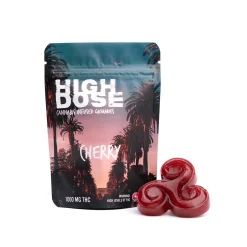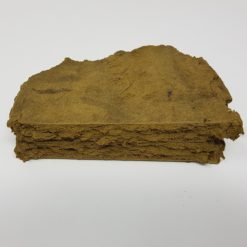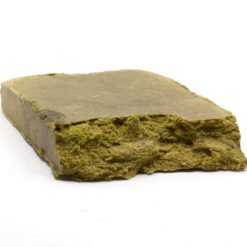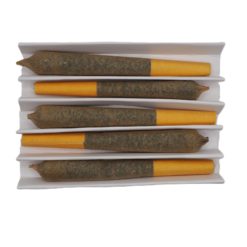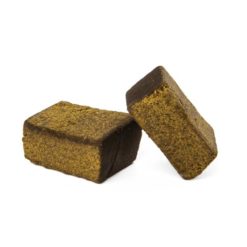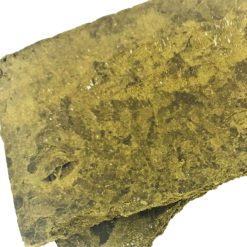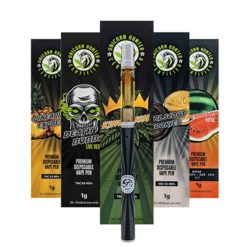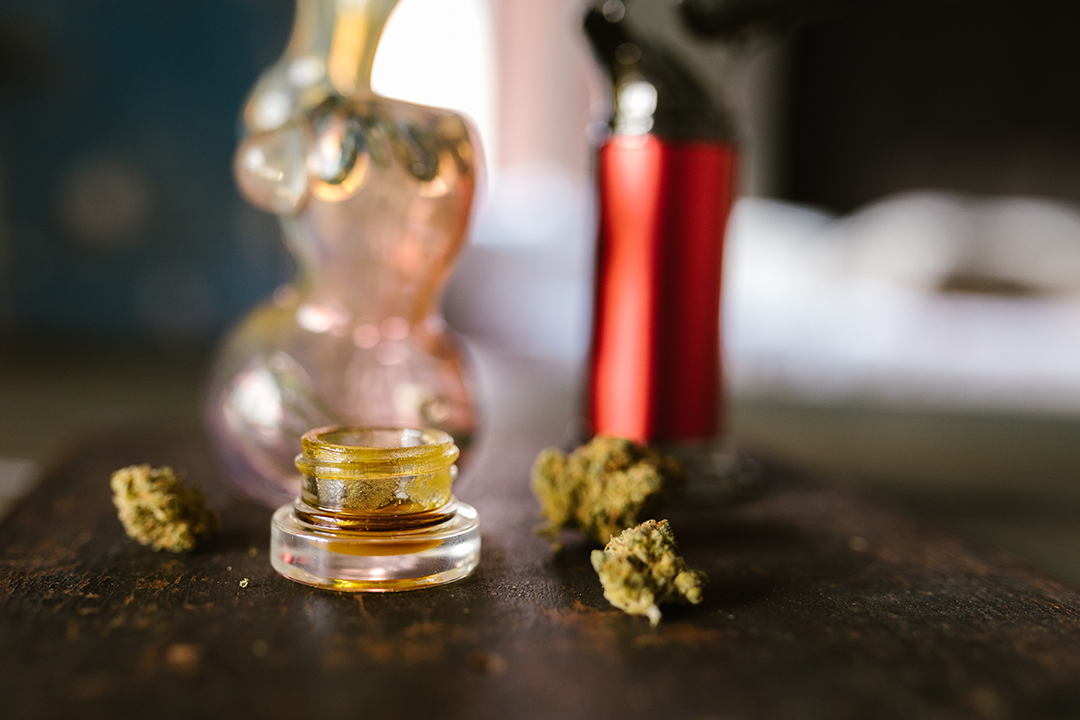Welcome to part 2 of our cannabis extracts series! In this final article, we’ll be going over some of the end product concentrates that each extraction method is able to produce. In order to make it easier to visualize, we’ve decided to list the extracts under the type of production method that was used to produce them, rather than by concentrate category.
Supercritical CO2 extract products
The CO2 extraction process is believed to be the most customizable cannabis extraction process when it comes to producing specific balances of oil based concentrates.
The most common extracts that can be produced with CO2 include any of the oil based extracts such as sauces, tinctures, resins, shatters, budders, high terpene full spectrum extracts (HTFSEs), and high cannabinoid full spectrum extracts (HCFSEs).
Because of the high degree of control, sc CO2 is the preferred method for use in the production of vape pens, as residual oils are more readily separated from the rest of the plant compound if so desired by the process operator. When it comes to vapes, NO OIL should be present in the final packaged product as it can cause severe infections and lung damage if burned lipids are inhaled, no matter how low the concentrations may be. CO2 is also becoming the preferred method to produce isolates. Cannabinoids like THC and CBD can be isolated at 99% or greater, and refined into a crystalline or powder – more on crystalline later.
Nearly all products produced with hydrocarbons, vapes being the exception, can be produced using CO2. There is a drawback to this method however. CO2 tends to yield lower amounts of cannabinoids in the finished product.
Hydrocarbons extract products
Hydrocarbon extracted products are the dominant extracts found on the market. Whether you’re looking for hash, oil, shatter, budder, crumble, resin, pull and snap, pie crust or any other oil based extract, it’s a safe bet to assume it was probably hydrocarbon extracted.
What are all these concentrates you might ask? Most are variations in consistency of the same product – the oils or desired balance of chemicals extracted from the cannabis plant or bud.
Let’s look at how some of these concentrates are made. It would take too long to list them all, so we’ll stick to the most common ones that are regularly seen in the market.
Live Resin
Live resin, also known as wax or BHO, is a cold extracted wax that was extracted with the goal of preserving the original profile of the cannabis strain used as closely as possible by preserving the terpenes. This allows for the flavour and aroma profiles of the cannabis to be preserved, along with the medicinal properties of the terpenes themselves. This makes for an enjoyable and flavourful dabbing experience – as long as your equipment is clean of course.
Budder
Budder is almost exactly what it sounds like. It is a consistency of cannabis resin concentrate that is whipped either mechanically, or by hand (this is difficult to do so mechanical is the best option) into a butter-like consistency. This type of concentrate is ideal for making cannabis edibles as it can easily be incorporated into baking, or candy making.
Shatter
Shatter is made by using cannabis that has been freeze dried to a water content of 5% or less, then cold hydrocarbon extracted. The reason for this is to remove any waxes, lipids, or other compounds that may hinder the quality of the end product. Following the extraction, a vacuum oven purging process is used to further reduce the moisture content as well as draw out any air pockets or residual solvents so that the consistency of glass can be achieved as closely as possible. The oven is typically set anywhere from 75f to 105f, depending on the desired end consistency of the final product.
Sauce
Sauce is essentially live resin that has been further refined by a centrifuge spinning process in order to remove some – or all – of the cannabinoids in order to produce a terpene dominant resin. Depending on the desired potency, cannabinoids like THCa and CBD are readded in measured quantities in order to produce the desired potency of the sauce.
Diamond
Diamonds are produced by leaving a small amount of solvent in a sauce mixture while it’s spinning so that THCa and other cannabinoid acids can be spun off and start to crystallize into sugar-like crystals. These crystals – also called crystalline – once fully constituted and separated, are called Diamond and can be equal to or greater than 99% of the isolated cannabinoid of choice. In terms of the demand in the market, the cannabinoids most commonly isolated into diamonds are THCa and CBD although this could be done for many other cannabinoids should the need arise.
Ethanol extract products
Ethanol extracted products are typically products that are made from crude oil, although there are some exceptions to this. What’s crude oil? Crude oil is made using an ethanol distillation process that uses older or less desirable cannabis flower that has maybe sat in storage for too long or is of a lesser quality.
The extracted oil itself is basically a cannabis sludge that needs many more refinement steps after being ethanol distilled in order to have a good end product.
Some of the products produced using this process are isolates, and distillates. Isolates are essentially the same as diamonds and crystallines, but distillates are a bit different from other extracts. When producing a distillate, older or low quality cannabis flowers that have very low terpene content are typically used. As a result, cannabinoids tend to be the only things distillates contain. The way they are refined from crude oil is via an evaporation process inside of a sealed chamber. Once the cannabinoids are separated, they are reconstituted from a vapor, back into a liquid state and then refined further to be used for various distillate products. On average, the typical cannabinoid (THC or CBD) potency for a distillate is between 75%-95%.
Solventless concentrate products
At last we come to our solventless products. These types of concentrates are the easiest to produce out of any other on this list. So easy in fact, most can be done at home safely. Common solventless concentrates such as classic hash, rosins, and even butters can all be made at home with heat, pressure, or a combination of the two.
Live Rosin
Rosin for example can easily be made using a hair straightening iron and wax paper. Just let the iron get hot, grab a bud, place it between 2 pieces of wax paper, press for approximately 30 seconds and voila! You have a home-made concentrate.
Classical Hash
Even traditional hashes can easily be made at home. Simply take the kief (trichomes that have been separated from the main bud via grinding and sifting) and begin to work it into a ball or any other shape by using a bit of pressure and an optional low heat source such as a hair dryer held at a distance. Before long, you’ll have a beautifully browned homemade classic hash brick or ball.
Cannabis Tea
Another but less common method of solventless concentrates is hot water extraction into tea. We briefly touched on this in the last segment, but it’s worth repeating since this method is not very common. By adding ground bud and even kief to hot water, it is possible to kickstart the reaction necessary to activate THC by converting it from THCa, without actually needing to burn it. The activation is low depending on the temperature, but the result is often a mild to low potency tea that can be enjoyed in the evenings as a way to relax and not get too high.
Summing up
This brings us to the end of our Cannabis Extracts series. We hope you enjoyed this brief overview of the cannabis extracts and concentrates world! We also hope you have been inspired to broaden your cannabis experience horizons by trying out new kinds of products!
If you’re feeling keen, stop by our store to check out our wide selection of concentrates and find a product that best fits your needs based on what you learned in this series.
References
Cannabis Concentrates Explained (Detailed Guide to 11 Products), by Helena Miles, 2020
Related The many types of solventless cannabis extracts, by Patrick Bennett, 2016
Your Guide to Ethanol Extraction in Cannabis by Mark June-Wells, Ph.D, 2018
Ethanol Extraction – The Pros and Cons of Ethanol for Cannabis Extraction, by Precision Extract Solutions Admin, 2018
Live Rosin vs Live Resin | Differences in Extraction Explained, by Precision Extract Solutions Admin, 2020
Related What Are CO2 Cannabis Extracts and How Are They Made?, by Patrick Bennett, 2018
Extraction Explained: How to Make Cannabis Extracts – Live Resin, Shatter, Craft Concentrates & More, by Nick Tennant of Precision Extraction Solutions, 2020



